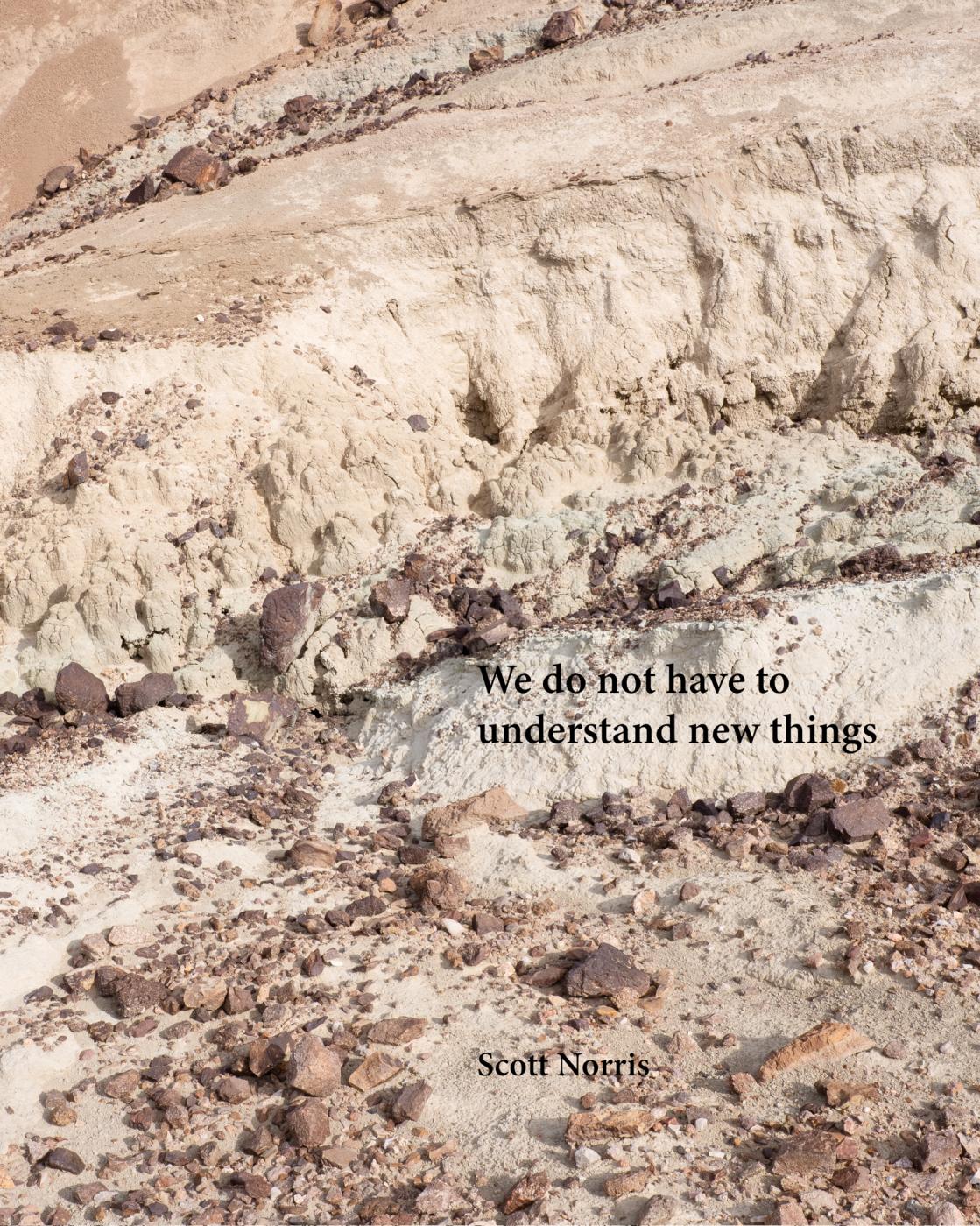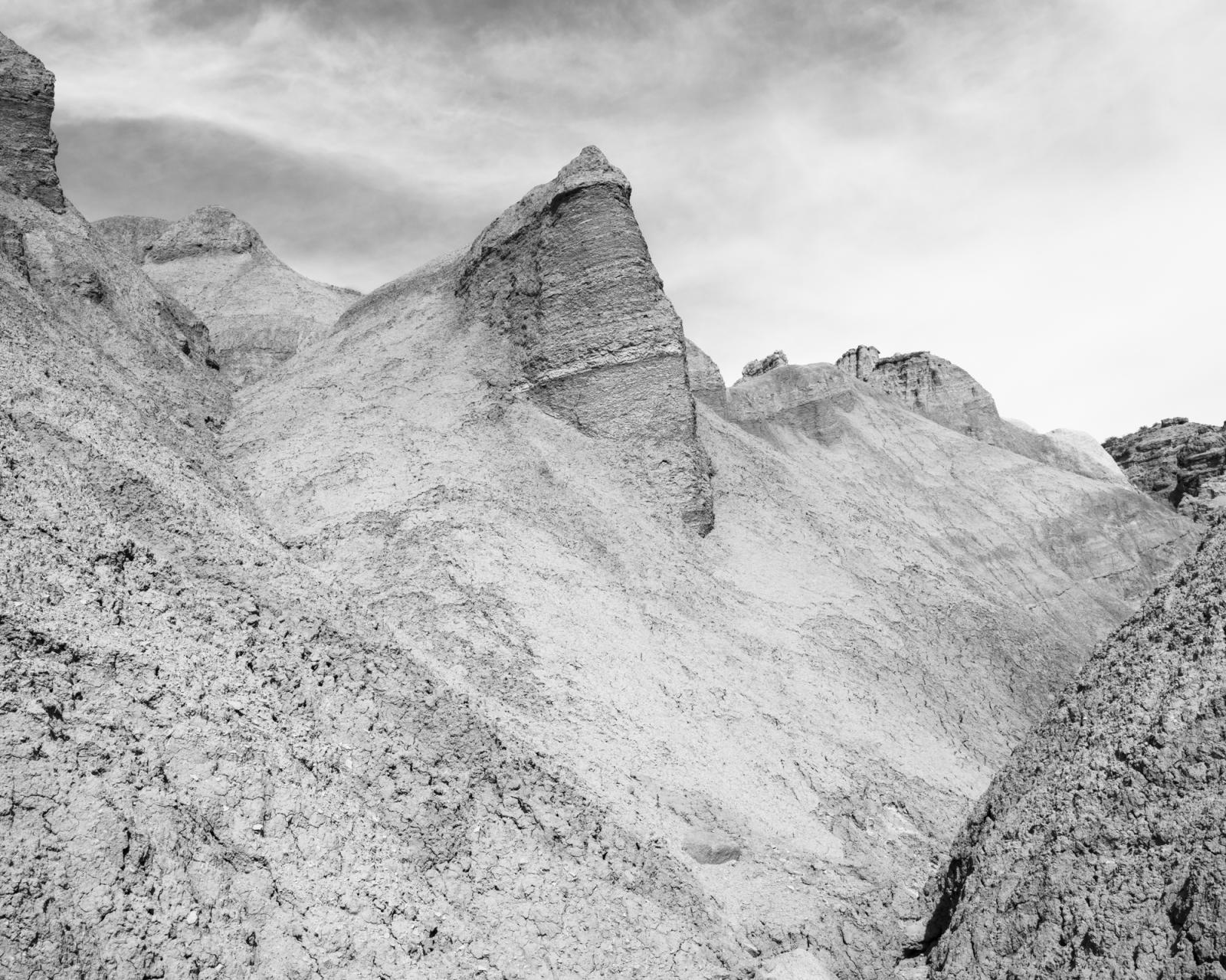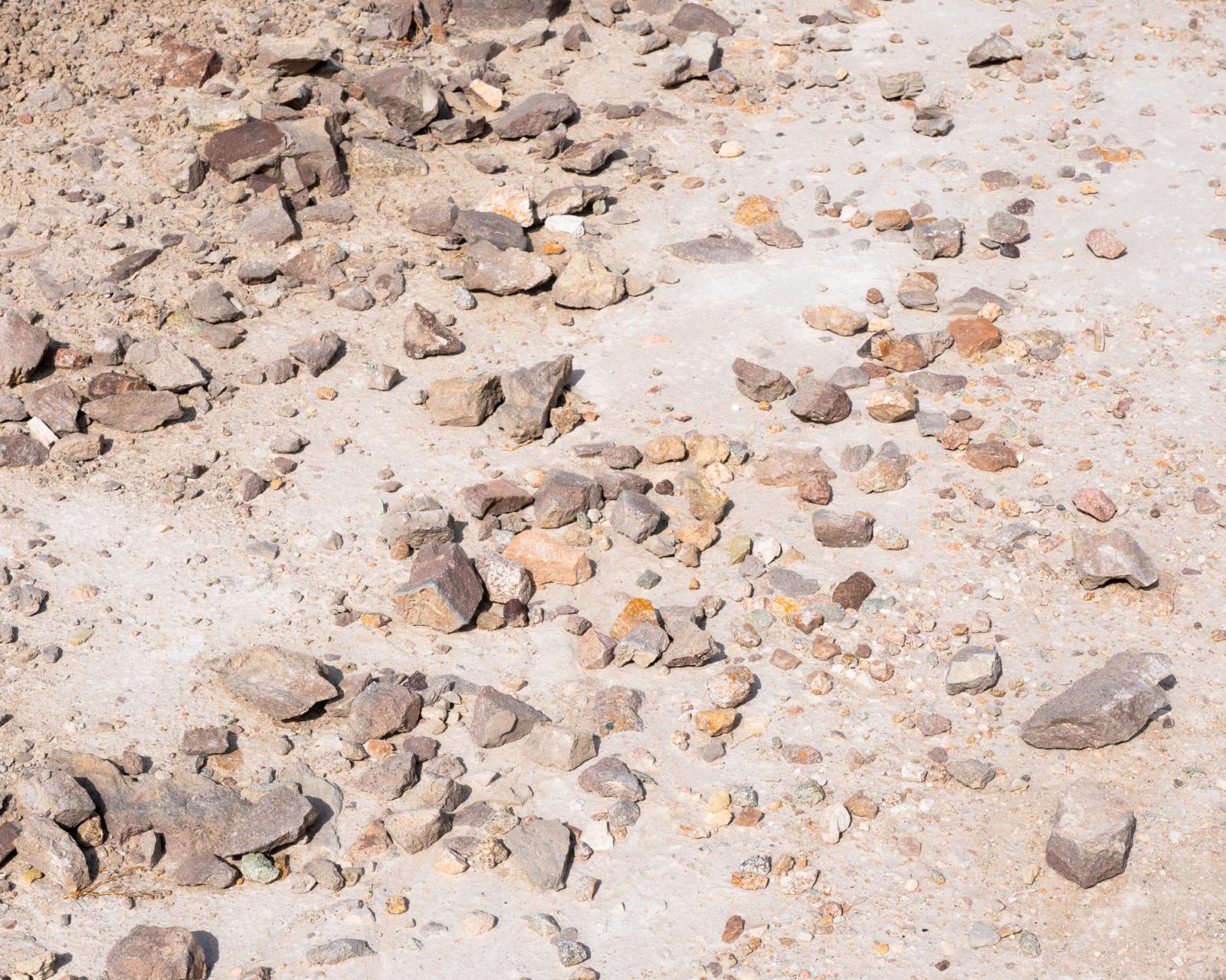Public Project
Desert
“Thus since the seer is caught up in what he sees, it is still himself he sees; there is a fundamental narcissism of all vision. And thus, for the same reason, the vision he exercises, he also undergoes from the things, such that, as many painters have said, I feel myself looked at by the things…”
Maurice Merleau-Ponty
Maurice Merleau-Ponty
I am captivated by the desert, in love with its beauty and its magic, and its indifference to human concerns. I am fascinated by both its wildness and its fragility, and the way even in places most altered by humans the desert retains something primordial, in its vast spaces and enveloping silences. The quality that most marks the desert, to me, is a strange, haunted aliveness, which seems to transcend the familiar binary of animate and inanimate. It is a place where I have sometimes encountered a slippage in the normal rules of how things work, both in the human realm and the undergirding, physical reality. I once had a deeply inexplicable experience in the Mojave, an anomaly that caused me to question much of what I thought I knew about the world. The impact of that never left me; it is one of the driving forces behind this work.
The photographs here depict an encounter, or series of encounters, between myself and the Mojave Desert landscape. These meetings involved a great deal walking alone in remote places, gazing at things surrounding me. Open vistas but also, and more movingly, all the individual plants and stones and patches of ground that seemed to call for my attention. The mood of these encounters was one of intimacy and vulnerability, the strange self-not-self realization of bodies present to one another. In the desert, the earth itself is stripped bare, and accordingly in images of myself I am without clothes. My nakedness became a kind of ritual, a setting aside of constructed self and social identity in order to take up what is usually pushed to the margins of consciousness and forgotten: my own animality and terrestrial materiality. Nakedness also brings about an intensification of sensation, both in one’s perceptions and in a bodily awareness of being perceived. I employ it here not to participate in the genre of the photographic nude, but to say something truthful about the desert and myself, and perhaps about our perpetual human encounter between body and land.
I have thought a great deal about the spectral quality of the desert, and the longing that animates our enmeshments with landscape. But such things are difficult to capture in words. I am a scientist by training; but the truth of the desert seems to be something that I apprehend more with my body than my mind. Out on the vast bajadas, among the heaped quadrillions of stones, the infinite currents of sand, and uncountable solitary creosote bushes that merge into a pale green stripe in the distance, I am shocked and silenced by the sheer fact of each thing’s presence. And how each seems intimately bound up with my own. The desert appears to me then not as a landscape of objects but of others, a world of selves. Each thing I see is also in some way gazing back at me, bestowing on me the gift of visibility.
2,912





























































